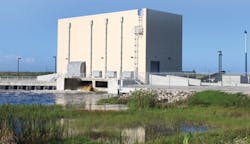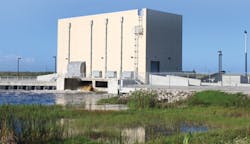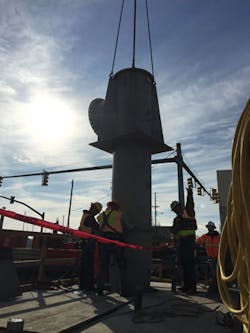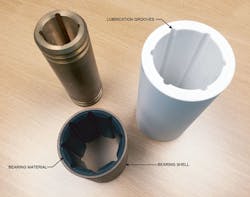Pumping Projects
By Donald Cohen
Project managers who employ water pumping mechanisms must consider a constantly changing regulatory scenario regarding environmental and clean water issues. Some of the most critical regulations aren’t well known, especially those concerning which waterways are protected by the Clean Water Act. And the confusion and misunderstanding that ensues can cause expensive delays that can conceivably derail a project, and even result in costly fines levied by governmental agencies. This article seeks to bring clarity to issues of regulatory compliance with the Clean Water Act during pumping operations and will assist project managers in assessing which pumps can be used to ensure that no pollutants are discharged into the nation’s waterways.
The Clean Water Act
In 1948, the Federal Water Pollution Control Act became the first U.S. law to address the issue of water pollution. A growing public concern for the need to regulate the release of pollutants into our waterways led to the passage of sweeping amendments to the Act in 1972. With the new amendments in place, the law became commonly known as the Clean Water Act (CWA; 33 USC §1251 et seq. 1972).
The Environmental Protection Agency (EPA) summarizes the Clean Water Act as establishing the basic structure for regulating discharges of pollutants into the waters of the United States and regulating quality standards for surface waters … Under the CWA, EPA has implemented pollution control programs such as setting wastewater standards for industry [and] water quality standards for all contaminants in surface waters.1
Which Waters are Regulated by the CWA?
It is widely misunderstood which bodies of waters are regulated by the Clean Water Act. Different interpretations of Supreme Court rulings over the past decade have contributed to the confusion. As a result, it has become difficult for project managers and design engineers to assess whether they will be in compliance with federal regulations if they use pumping mechanisms that discharge even minimal quantities of oil or grease into waterways. Because many of today’s water pumps still employ antiquated lubricating systems for the pump’s bearings, which release oil and/or grease into the waters being pumped, use of these pumps may risk violating the CWA.
To clarify which bodies of water are protected, the EPA has summarized Section 404 of the Act as follows: The CWA made it unlawful to discharge any pollutant from a point source into navigable waters, unless a permit was obtained. EPA’s National Pollutant Discharge Elimination System (NPDES) permit program controls discharges. Point sources are discrete conveyances such as pipes or man-made ditches. Individual homes that are connected to a municipal system, use a septic system, or do not have a surface discharge, do not need an NPDES permit; however, industrial, municipal, and other facilities must obtain permits if their discharges go directly to surface waters.2
Based on the agency’s interpretation of the statute, implementing regulations and relevant case law, the following waters are protected by the CWA: traditional navigable waters; interstate waters; wetlands adjacent to either traditional navigable waters or interstate waters; non-navigable tributaries to traditional navigable waters that are relatively permanent, meaning they contain water at least seasonally; and wetlands that directly abut relatively permanent waters.
In addition, the following waters are protected by the CWA if a fact-specific analysis determines they have a “significant nexus” to a traditional navigable water or interstate water: tributaries to traditional navigable waters or interstate waters; wetlands adjacent to jurisdictional tributaries to traditional navigable waters or interstate waters; and waters that fall under the “other waters” category of the regulations. The guidance divides these waters into two categories: those that are physically proximate to other jurisdictional waters and those that are not, and discusses how each category should be evaluated.
The following aquatic areas are generally not protected by the CWA: wet areas that are not tributaries or open waters and do not meet the Agency’s regulatory definition of “wetlands”; waters excluded from coverage under the CWA by existing regulations; waters that lack a “significant nexus” where one is required for a water to be protected by the CWA; artificially irrigated areas that would revert to upland should irrigation cease; artificial lakes or ponds created by excavating and/or diking dry land and used exclusively for such purposes as stock watering, irrigation, settling basins, or rice growing; artificial reflecting pools or swimming pools created by excavating and/or diking dry land; small ornamental waters created by excavating and/or diking dry land for primarily aesthetic reasons; water-filled depressions created incidental to construction activity; groundwater drained through subsurface drainage systems; and erosional features (gullies and rills), and swales and ditches that are not tributaries or wetlands.3
Avoid Discharging Any Pollutants Whatsoever
It may seem that discharging small quantities of oil and/or grease into waterways might be harmless to the environment. However, the CWA provides strict regulation that prohibits even minute discharges, and even biodegradable oil is deemed a pollutant. And it must be noted that the CWA’s definition of “waters of the United States” is extremely broad. However, on August 28, 2015, the EPA further clarified its definition to include:
- All waters which are currently used, were used in the past, or may be susceptible to use in interstate or foreign commerce, including all waters which are subject to the ebb and flow of the tide.
- All interstate waters, including interstate wetlands.
- The territorial seas.
- All impoundments of waters otherwise identified as waters of the United States under this section.
- All tributaries, as defined in paragraphs(i) through (iii) of this section
- All waters adjacent to a water identified in paragraphs (i) through (v) of this definition, including wetlands, ponds, lakes, oxbows, impoundments, and similar waters.
Many municipal water districts throughout the nation are especially vigilant because of the potential liability issues posed by the discharge of oil or grease into the waters and generally self-regulate to ensure strict compliance with the CWA.
“It’s long been our policy at the South Florida Water Management District (SFWMD) to never use any equipment that has any potential for accidental discharge into the water,” said Randy Smith, spokesman for the SFWMD. “For decades we have closely regulated ourselves to ensure that this does not occur. We have literally hundreds of pumps throughout the district and purchase only equipment that does not cause accidental discharge of oil or grease into the waters.”
According to attorney Michael Lozeau of Lozeau Drury LLP, an environmental law firm, “Releasing oil to pump bearings that also, by design, is released to the waters being pumped is a discharge of a pollutant to waters of the United States.” Lozeau warned that the vast majority of locales where oil-releasing pumps are or will be installed will involve discharges directly or indirectly to the waters of the United States.
“Unless the operator of the pump has obtained a National Pollutant Discharge Elimination System (NPDES) permit authorizing such a discharge, the Clean Water Act categorically prohibits that discharge of oil or grease,” he said. “Any owner or operator of such a pump risks an agency or court order prohibiting the discharge, requiring costly replacement of the pumps and civil penalties of up to $37,500 per day of violation.”
Furthermore, according to Lozeau, courts throughout the U.S. have held that NPDES compliance is a matter of strict liability and a defendant’s intent and good faith are irrelevant.
Bottom line - it’s better to be safe than sorry when it comes to adhering to the regulations set forth by the CWA. Protect yourself as well as the waterways of the U.S. by using pumps that either do not use oil or grease lubricating systems or that provide a closed system that prevents any of these pollutants from being discharged into the water.
About the Author: Donald Cohen is a freelance journalist who has worked as a radio news director, public relations consultant and speechwriter for the Washington State Attorney General.
References:
1. Summary of the Clean Water Act, U.S. Environmental Protection Agency, http://www.epa.gov/laws-regulations/summary-clean-water-act
2. ibid.
3. ibid.
More WaterWorld Current Issue Articles
More WaterWorld Archives Issue Articles



